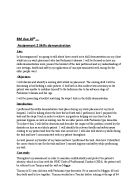Six years ago, my grandmother suffered a sudden heart attack. With no knowledge of CPR, I called 9-1-1 and waited powerlessly for the paramedics to arrive. She died in the living room while I waited. I was the only person home at the time.
Six years ago, my grandmother suffered a sudden heart attack. With no knowledge of CPR, I called 9-1-1 and waited powerlessly for the paramedics to arrive. She died in the living room while I waited. I was the only person home at the time.
My thoughts went to my grandmother when I awoke early last summer to the shrill sound of my mother's screams. Bounding to the living room, I found my little brother lying lifelessly in the arms of my mother. He had stopped breathing and was turning blue. I refused to let this happen again. Without hesitation, I snatched him from my mother, placed him on the floor, dropped to my knees and administered CPR. Nine long minutes passed before the paramedics arrived, and during that time, I managed to keep my brother alive. The ambulance rushed him to the intensive care unit at the local hospital where he spent several weeks making a full recovery.
While I never felt responsible for my grandmother's death, I resolved at the time to learn CPR, and in doing so, embarked on a journey that would shape my career interests and save my brother's life. In sharing the story of my younger brother's cardiac arrest and near death, I learned that many people in my community lacked the training and emergency plan needed to save a loved one's life. Determined to address this risk, I initiated programs offering CPR training both at homes and at local high schools, organizing echocardiogram screenings for school athletes, campaigning for the installation of automated external defibrillators at secondary schools, and working as an intern at a local hospital to prepare myself for a career in the medical profession.
While CPR training programs have been around for years, they are neither affordable nor easily accessible in many communities. In an effort to change that, I became a volunteer CPR instructor and created a program to bring Red Cross CPR training into my district's high schools. Called Heart Start, the program was initially opposed by school administrators who feared liability issues. After carefully researching legislation that protects CPR training providers, I convinced the school administrators that the liability risks were minimal. Through Heart Start, selected high school students are trained as CPR instructors and volunteer to conduct CPR classes for campus clubs and athletic programs. My program reaches beyond the student population by offering certification to members of the faculty, the PTA, booster clubs, and various community service organizations. Although still in its infancy, the program has facilitated the CPR certification of over one thousand people. Touting this early record of success, I approached the American Red Cross and convinced them to help me expand the Heart Start program. It is my hope that, one day, Heart Start will provide every high school student with the opportunity to become certified in CPR.







